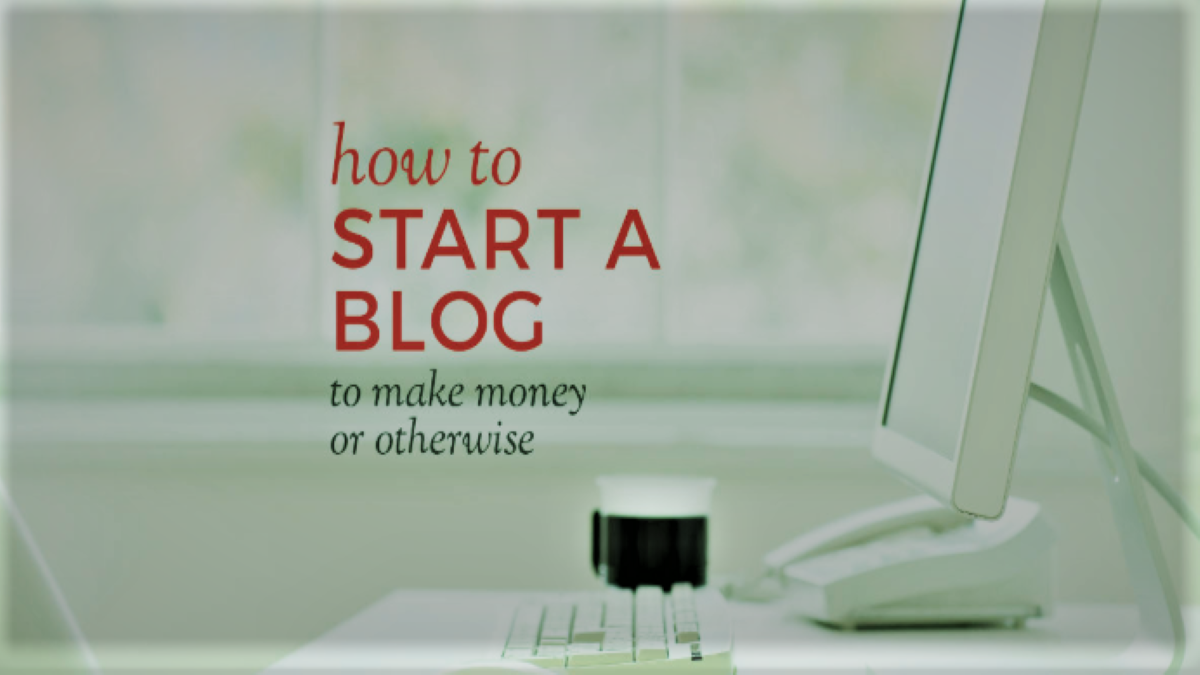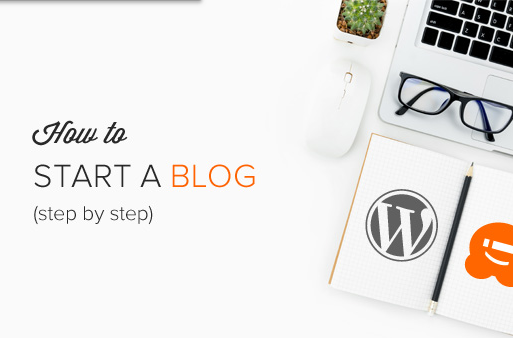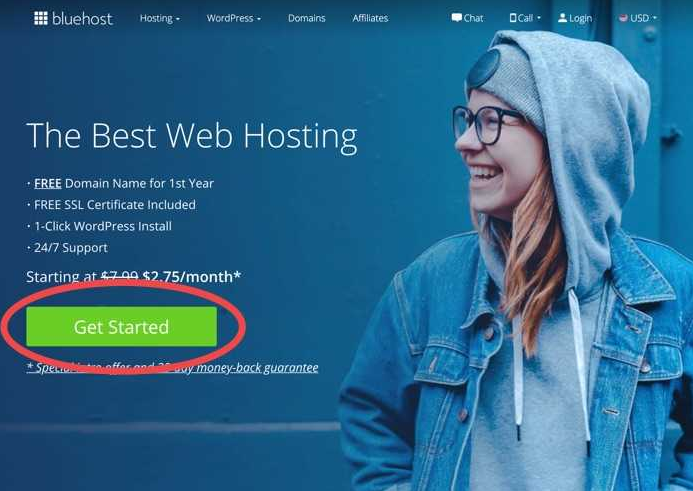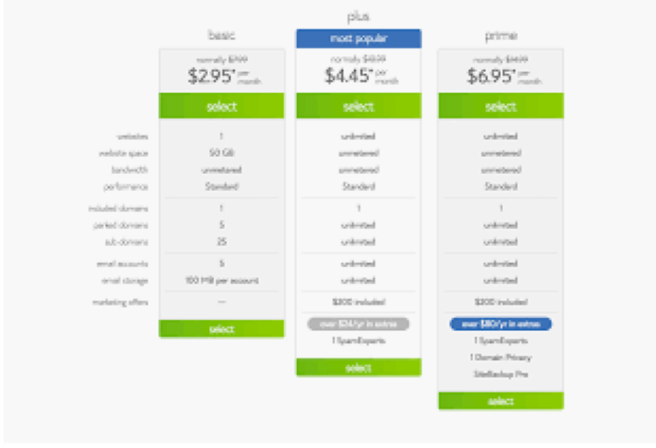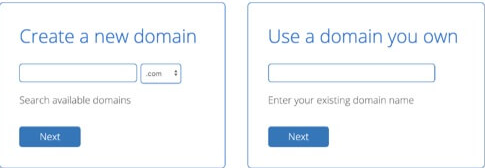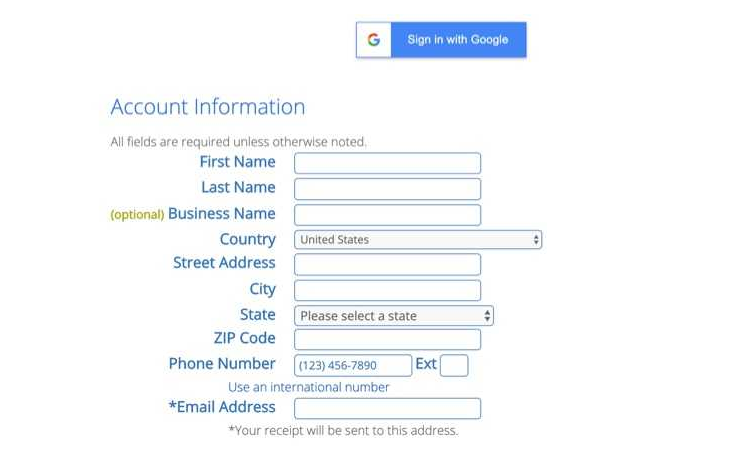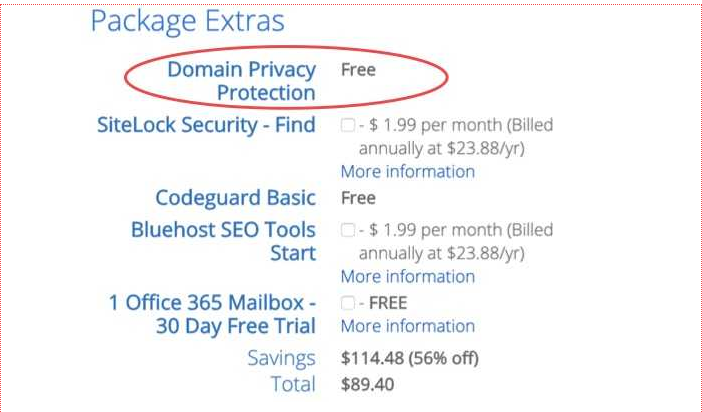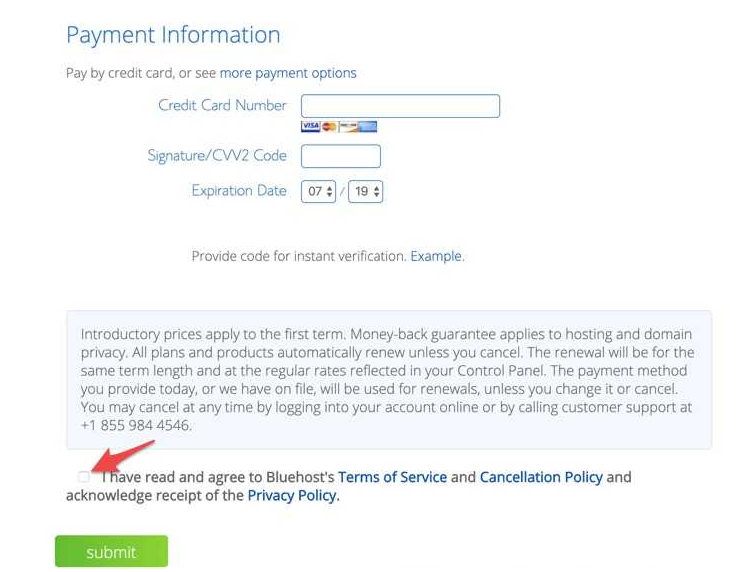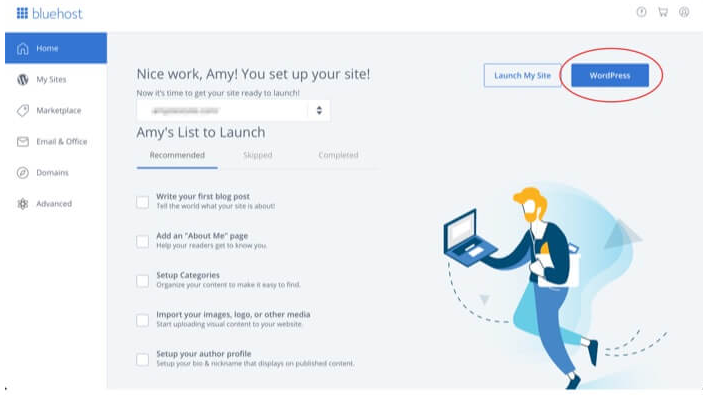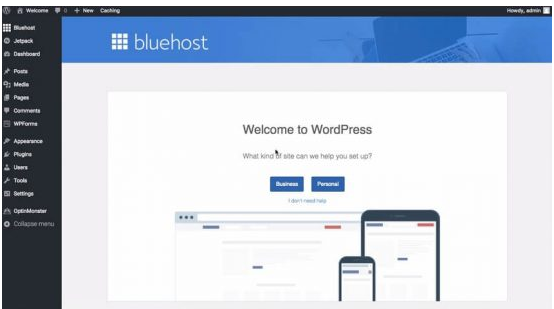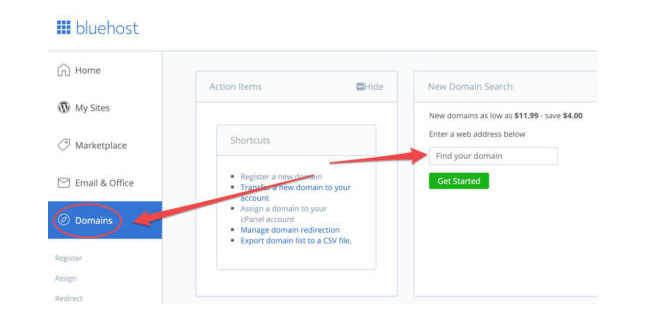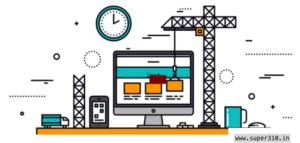How to start a blog (to make money or other)
Wondering how to start a blog? Hello, I’m Saurabh I’ve been blogging for 15 years and I like simple. In this beginner’s guide, I’ll just show you how to start a blog (and on a budget). No technical experience is required. You think it’s easy and fast!
I created my first blog in 2010 with zero computer experience. It took me forever because I had to go through my path. This how-to guide has step-by-step instructions in an easy-to-follow format.
7 steps to start a blog
- Decide what the blog is about
- Choose a blogging platform
- Pick up hosting
- Set up your blog
- Get started with WordPress
- Complete your domain setup
- Customize and Launch!
You don’t worry, I walk through you. We will also talk about troubleshooting and next steps.
What is a blog?
Why start a blog?
Here are some popular reasons from my readers:
- Earn money by working from home. I make a full-time income blogging. Many bloggers do the same. Blogging works, but low risk and low overhead make it a great opportunity.
- Become a published author. Publishers want authors to have an online presence. The reason is simple: it is very easy to sell books to people who already know you. A blog is a perfect way to be known.
- Help your business or organization. A blog helps businesses and organizations reach a lot of people at a very low cost.
- Just write. If you want to write, share your story or encourage others, a blog is a great place to do so.
A blog is an online house that you own and control. If you are serious about breaking the online space, do not put your livelihood, brand or reputation in the hands of others, such as social media.
How much does a blog cost?
If you use the method below, it works from $ 5 to $ 10 per month. I blogged on this budget for years. As my blog and income grew, I started paying for more premium tools and services, but there is no need to start them.
Can I start a blog for free?
Yes, but if you want to earn money, I do not recommend it. Why? Five reasons:
- Limited Demonetization. Some free services may limit the money you make until you “upgrade” to a higher level. You have to pay for that upgrade of course, which defeats the purpose of having a free blog in the first place.
- lack of support. Companies do not offer blogs free of the goodness of their hearts. They want to earn money. If you are not giving them money, they will not go out of their way to keep you happy. Sometimes this means that you have no support. Other times you will misbehave with offers for your paid products.
- Basic features only. Basic features may not be a problem at first, but as you grow, you’ll feel the pinch. Expansion and flexibility are important. Both are limited to free blogging services.
- Switching is not easy if you want to switch to a better service later (which start a free blog), it is a hassle and can be expensive. It takes a lot of time and effort to do it yourself. It costs hundreds of dollars to hire someone to do it correctly.
- Cannot use others for inspiration. This happens for new bloggers all the time. They start a blog for free. Soon they see cool features on other blogs that they also want. The problem is, those features are not substitutes on their free service.
How long will it take to make money?
Those who consider their blog as a part-time job usually start earning coffee money for about 6 months, and a solid part-time income around 12 months. If it is a consistent, full-time income, you will allow 24 months.
What is the best type of blog to start with?
I recommend a self-hosted WordPress blog. Most big and small bloggers do.
These are easy steps for me to start a self-hosted WordPress blog, no technical experience required.
Step 1: Decide what the blog is about
If you are part of a business, company or organization, your blog should be related to the product or service you provide or the reason you provide.
If you are a person, you have more flexibility when choosing a subject. But the main things to remember are:
- Enjoy something about your blog. If you are not enthusiastic about your subject, writing about it would be drunken. (And who wants that?) Also, if you are not, readers should not be enthusiastic.
- Blog with lots of room for discussion. A blog needs a lot of content to go and remain interesting. You’ll belong on it so make sure you have plenty to talk about.
- Choose a niche in which you can establish yourself as an authority. You probably won’t be the first to blog about the topic you choose. Don’t think about it at all, just bring a unique angle. Do you have a fair chance to make your blog better than talking about the same thing? The goal for any blog is to become a go-to resource in your topic or niche.
If I do not know what the blog will be about?
Start anyway! One of the biggest early mistakes is that your subject must be set in stone before you begin. If you like most of us, you either switch subjects or settle into something as you go.
Step 2: Choose a blogging platform
If you want to open a restaurant, you need a kitchen to prepare food. If you want to start a blog, you need a blogging platform (software) to prepare the words.
There are many blogging platforms to choose from. WordPress, Blogger, Squarespace, Wix, and Weebly are just a few.
All have pros and cons, but WordPress is by far the most popular (source), and for good reason. It is flexible, functional, has a large community of users and works great if you want to make money.
I use and recommend WordPress.
(But not from WordPress.com. Wait, what do I know? It’s a bit confusing. It has to do with hosting. So let’s talk hosting …)
Step 3: Choose Hosting
As I said, if you want to open a restaurant, you need a kitchen to prepare food. But you also need a dining room to serve your guests, right?
Likewise, if you want to start a blog, you need a blogging platform to formulate words, but you also need hosting to “serve” your blog to visitors.
Put another way, a blogging platform puts your words in a blog form. Hosting makes your blog live and accessible on the Internet.
let’s recap:
- Kitchen + Dining Room = Restaurant
- Blogging Platform + Hosting = Blog.
So far with me?
Now, back to the confusing WordPress.com thing I mentioned at the end of step 2…
When you choose WordPress as your blogging platform, you have two options for hosting:
- Hosted WordPress blog, sometimes called WordPress.com blog, is hosted by WordPress. These blogs are free, but in return, you get less control and your income potential is limited. (sad.)
- The self-hosted WordPress blog, sometimes called a WordPress.org blog, is hosted by a host you choose yourself. These blogs cost little money but they give you a lot of control, plus your income is not limited. (Hooray!)
Sidenote: Even though a self-hosted WordPress blog is sometimes called a WordPress.org blog, you do not need to use .org at the end of your name. You can still use .com or .in etc as I do for super310.in. Okay, move on…
This guide teaches you how to start a self-hosted WordPress blog, a blog liked by beginners and experienced bloggers alike.
As we said, to start your blog, you need two things: a blogging platform + hosting. Let’s get both of us at once? It will take about 15 minutes.
Step 4: Set up your blog
The combination I initially used, paid for and recommended, is WordPress (blogging platform) + Bluehost (hosting). This is a simple, all-in-one setup, and a money-back guarantee. Also, use this link for a discount:
Select a plan. Scroll to plan options. Click on the green selection button to select the scheme:
I prefer the Choice Plus plan as it has more unlimited features and includes domain privacy. Domain privacy keeps your private contact information hidden from the public and who doesn’t want to do that?
If you choose a different plan, you will have the option to add domain privacy for one minute to one month.
Enter the domain you want to use. Or, skip this step and choose later (super easy!).
Your domain is your web address. For example, super310.in is my domain name.
If you are not sure which domain to use, or the domain of your first choice (generic) is taken, simply select one by clicking the link below.
Otherwise, enter a new domain, or one that you already have in the appropriate box. (Entering an existing domain has not yet connected it. It has only been used to identify your Bluehost account so far.)
For this tutorial, I will use a new domain, but you can follow along with what you decide.
Set up your Bluehost account. Sign in with Google or manually enter your contact information. Either works.
Choose your package information. Choose the package based on how much you want to pay in advance.
Bluehost bill is for 1, 2 or 3 years. They do not offer a monthly payment plan (hosts that charge more). As you can see, it works out to be just a few dollars a month. And remember, there is a 30-day money-back guarantee!
Tip: Lower pricing for new customers only applies to the first payment. For example, if you choose a 12-month plan, your pricing will be good for 1 year but may increase after that. If you choose a 36-month plan, your pricing will be closed for 3 years. Therefore, choose the longest plan that your budget allows.
Exclude package extras except for domain privacy (if applicable).
As I mentioned, domain privacy keeps your personal contact information private. It is free with the Choice Plus plan. If you have chosen a different plan, check the box and add it here.
Note: If you already have a domain or will choose one later, you will not see the option for domain privacy here. For existing domains, domain privacy is controlled by the company where you first registered it, so contact them. If you choose your domain later, Bluehost will give you the option of domain privacy.
I uncheck the rest of the box.
Complete your hosting purchase. Enter your payment information, review the terms, check the box, press submit.
Create your account and set a password. This is the password for your Bluehost account, not your WordPress blog (which will come via email).
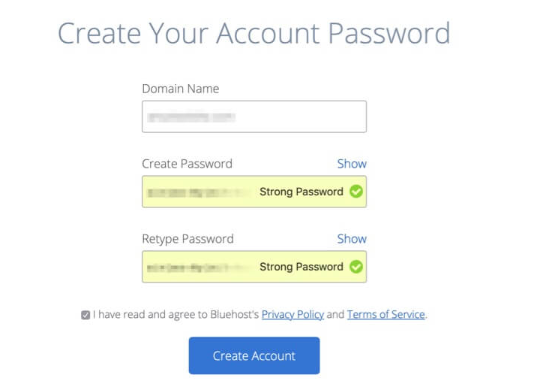
Log in to Bluehost. Use the password you just created. Or sign in with Google.
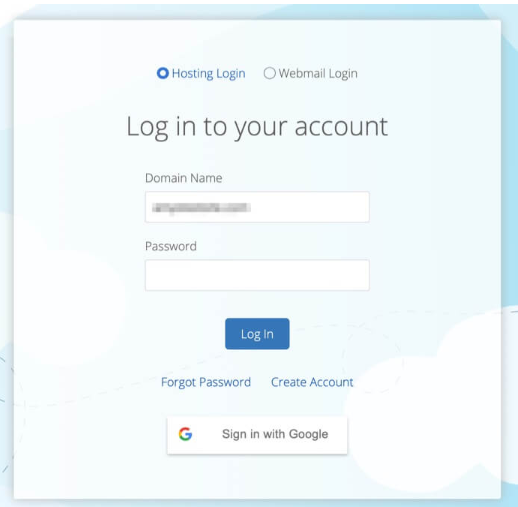
Start building your website! If you have an idea, enter your blog name and a tagline. If not, you can easily change it later.
To turn it on “Do you want a blog?” Toggle the switch next to. (If you want a regular (static) website without a blog post, skip it. You can always add a blog later.) For this tutorial, I think you want a blog.
Choose whether you want your blog post to appear on your home page or on a separate blog page. This is a matter of personal preference and can be changed at any time.
I have done both. Currently, I display my blog posts on a separate page. If a visitor comes to my home page, they will see a welcome page that does not change. If they want to read my blog posts, they can click on the blog link in my header.
Finish survey questions. You may be asked about the type of blog you are starting or how new you are in blogging. Neither closes you inside.
Discard any free themes. Unless you are familiar with any of the topics listed, skip this step (link below). Why? Because many free themes have not been updated, leaving a hole in the security of your site. It is not worth the risk. Choose a better theme later. I will show you how?
Congratulations, you have a self-hosted WordPress blog!
From here, I click on the WordPress button, so that I can configure the important settings in the WordPress dashboard which we will do next…
Step 5: Get Started with WordPress
At this point, you should have two sets of login information (sent via email):
- WordPress, where you write your posts and manage your blog.
- Bluehost, where you manage your hosting account and pay your hosting bill.
You can log in to your Bluehost account at Bluehost.com, but from this point on, we will spend most of our time in WordPress.
Welcome to the WordPress dashboard. You will spend a lot of time in the dashboard, publish posts and manage all aspects of your WordPress blog. This is the nerve center of your blog.
The black column on the left is a good indicator that you are in the WordPress dashboard. The rest of the screen may look different. not to worry. The key is the black column!
Okay, let’s get the important settings in order first.
Check your permalink structure. Your permalink structure determines how your post and page URL will be formatted. We want one that is good for SEO.
Warning: If you are already viewing a published post or page, do not change your Permalink structure. This may result in broken links. But if you are just getting started, you can continue.
- Go to Settings> Permalinks.
- If it is not already selected, choose the post name. Click the Save Changes button at the bottom of the page.
Change your username to an administrator. This is to protect your site from hackers who exploit the default admin username. To change this, first, create a new user, then delete the admin user.
- Go to Users> All Users> Add New.
- Fill in new user information.
- Choose “Administrator” for a role.
- Save your changes and log out of WordPress.
- Log back in with the non-admin username and password you just created.
- Go to Users> All Users.
- Hover over the admin username in the list and click the Delete link.
- Provide all posts and links for new user and confirm the deletion.
If you want more in-depth instructions with screenshots, check my WordPress for the initial post here.
Install important plugins. Despite my love/hate relationship with plugins, there is one plugin that I always install correctly: Yoast SEO. It is widely recognized as an SEO plugin. (What is SEO?) And if you are going to comment on your post, I will also install Antispam Bee. It fights spam.
- Go to Plugins> Add New.
- In the search bar above, enter the name of the plugin you are searching for. Find it in the list and click Install Now.
- Once it is installed, you must activate a plugin before starting work. Otherwise, it is inactive on your site, which is not ideal. Either activate or remove a plugin. To activate, go to Plugins> Installed Plugins and click Activate under the plugin name.
- Once installed and activated, you will be able to access your features as long as you write your post (eg Yoast SEO), as long as it is not a plugin that runs in the background (eg Antispam Bee).
- Once activated, configure the settings of a plugin if needed. You can often tell that there are settings for a particular plugin by going to Plugins> Installed Plugins and looking for the Settings link under the plugin name. You can also see a plugin listed in the black left column of your dashboard. This is how Yoast SEO is accessible. Most plugins come with a default configuration that is fine, to begin with. If you want to dive into the configuration, Yoast has a configuration wizard which you can find under SEO> General. Antispam B has a settings link under Plugins> Installed Plugins.
- If you ever find a plugin, but it does not appear as an option, no worries. Some plugins have to be uploaded directly.
Remove Default Content. All new WordPress blogs have clouty, default items. I remove the following:
- Unnecessary plugins. Because plugins can slow down your site and mess things up, I use them very sparingly. I only add a plugin when I have a clear reason to do so. Go to Plugins> Installed Plugins. I remove all except the Bluehost plugin. A plugin must be disabled before it can be deleted, so if you hover over a plugin you have to select Deactivate, then hover again to see the delete link.
- Meta Widget. Having a Meta widget on your site screams newbie. Go to Appearance> Widget. Find the meta widget box, expand it by clicking on the small down arrow and click the delete link. Make sure your change is saved!
Edit some common settings. Go to Settings> General.
- Site title and tagline. If you wish, you can edit these in Settings> General. The title of your site does not match your domain, but it will likely. Your tagline is a short phrase that describes your site or mission well. Again, these can be changed at any time.
- Email address. If your main email address is not entered here, then go ahead and provide your address. Notifications will be sent to this address.
- Time Zone. An incorrect timezone cannot break anything, but scheduled posts get published according to this setting, so if it is not set correctly, you will wonder why your post is not going live at the time you expected is.
- Do not touch your site URL! You must be thinking about those URLs. If you change them now, it will mess things up. You see, your blog starts on a temporary domain. It is common. Let’s talk about how it turns into your permanent domain …
Step 6: Complete your domain setup
Transfer from your temporary domain. The way you proceed depends on what you entered in the domain screen in step 4.
Have you entered a new domain? Activate it Checks your email inbox to find domain activation email. Click the button inside to complete the activation process. easy. Now just wait. Bluehost will automatically switch it for you.
Have you entered an existing domain? point it. Edit the name server where your domain is registered. Here are the instructions by the registrar. If you get stuck, call Bluehost and they will run through you.
Did you click the link later to choose your domain? Hand it to him First, decide on a domain. In your Bluehost account, go to the Domains section (an option in the left column) and search for the domain you prefer.
At checkout, the balance would be zero because the credit was automatically applied for an independent domain. During checkout, you can add domain privacy if you haven’t chosen it before (which I definitely suggest).
Once you have the domain, it will be listed under the Domains section in your Bluehost account. Select it
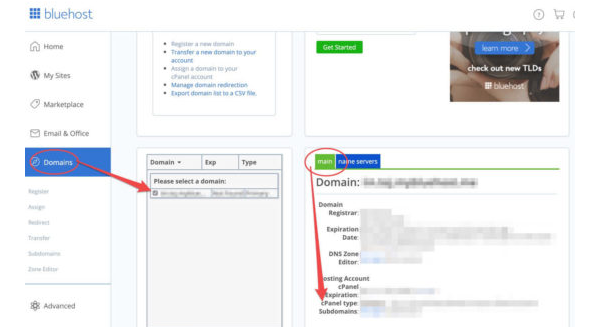
Scroll down to the cPanel type under the tab titled “Main” on the right side of the page. Click Assign.
Wait a few hours to promote your domain. This is a great way of saying that it takes some time for your blog and your domain to find each other on the world wide web and solidify their connection.
If you’re wondering if they can’t find each other, type your domain into your browser’s address bar (Chrome, Safari, Firefox, etc.) and see if your permanent domain is forwarded to your temporary domain Walks or not. If yes, then you are set!
Sidenote: At this point, your blog will look terrible. Don’t worry, I’ve got you covered there too. More on that below.
Add SSL (HTTP to HTTPS). Once your permanent domain is working, protect it. What it does is adding an S at the end of HTTP that makes your site secure.
This gives visitors peace of mind. It also puts your site on the good side of Google.
To complete this step, you must activate an SSL certificate or turn on your free Bluehost SSL certificate. Do not be afraid of fancy words. this is easy.
Again, how you proceed depends on what you chose in step 4 back on the domain screen.
Did you enter a new domain or chose one later? Follow these instructions.
Have you entered an existing domain? Contact the company where your domain is registered. Tell them that you want to protect your site with an SSL certificate.
After adding SSL, take a little time to grab your domain. Finally, when you type your domain into a browser like Chrome, you will see a secure icon:
An unsafe site would have an “i” with a circle like this with Chrome:
If your site does not show HTTPS after 24 hours, call Bluehost (for new or chosen later domains) or your domain registrar (existing domain) so they can find out the problem.
Step 7: Customize and Launch!
This is where you do your work and start making your blog your own. I recommend doing things in the following order.
Publish some pages and posts. Adding content to your blog makes it easy to customize your design because it will not be empty like an empty balloon. Also, readers have to read something.
Page. The following are the pages I create first:
- Home (mine)
- Blog (if applicable, it should already be if you have chosen to add a blog during step 4, go to Page> All Pages and see)
- About (mine and how to write a good one)
- Contact (mine)
- Privacy Policy (follow the link below to use mine, generator)
- Others (eg equipment and a disclosure policy if you sell anything)
Post. When you launch I recommend publishing at least 2-3 excellent posts. If you are having trouble coming up with ideas for your first post, google your main topic or niche and see what others have written. Do not copy the syllabus, but use those positions as inspiration. Make your post even more complete. Here are suggestions for writing posts.
If visitors find you, it’s good to have solid content available, but don’t be prepared to write a dozen or more posts before you publish anything. Get your blog on the ground as soon as possible! This helps SEO.
Customize your design. If you like the most, you want to customize your design. A lot of new bloggers get really excited about all the design options available. However, less is more. The more fancy, more moving parts your subject. The more moving parts, the greater the breakdown. Read my post about choosing a WordPress theme.
Cumming Soon page. Bluehost automatically starts your blog from the Coming Soon page:
When your pages and posts are published, and your design is customized to your liking (it’s always variable!), click the button at the top of your dashboard and follow the prompts to remove the incoming page :

